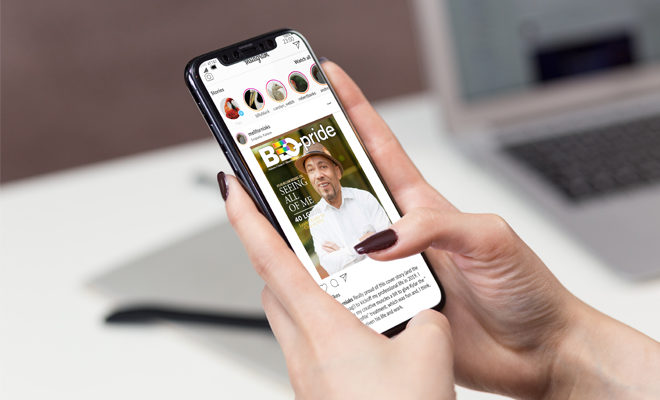
BEQ Today
The Value of Personal Branding
By Robin Dillard and Matt Skallerud
By now you’ve undoubtedly come across countless social media how-tos to boost your business, engage customers or share interesting information. It’s likely that you’ve already co-opted your kids, assigned the task to a young, energetic person on your team or perhaps even hired “an expert” to handle it, only to find you have 3 followers and your last post was 6 months ago. Have no fear, Pink Banana Media and BEQ Pride magazine are here to help.
For those of us in the diverse supplier ecosystem (if you’re reading this article, you are definitely part of the group), it is imperative that you establish your personal brand separate and apart from your business, your employer or any other organizations you represent.
If you’re lucky, you have other people who are responsible for your business social media accounts, but are you doing everything in your power to leverage your personal brand to boost your favorite causes, your business and your brilliance?
We need you to throw your hat in the ring, join the conversation and learn how to use social media to amplify your voice for the things that matter to you. No worries, we can address your business brand concerns over a virtual coffee break at another time. For now, we’re interested in connecting socially on four platforms —Facebook, Instagram, LinkedIn and Twitter.
We’ve decided to tackle the low hanging fruit first, by getting you up and running and to shamelessly advance our common cause—Diversity, Equity and Inclusion (DEI) in business. We believe our collective voices matter and even though we won’t be able to resolve all the inequities today, we promise to boost your social media IQ across four social platforms and provide a simple plan of action to get you started. It’s all about a few skills, a little confidence and consistency. Here we go!
Your Personal Brand
You already have one— a personal brand that is— even if you haven’t debuted in social media. People know you, they know what you’re about and they want to connect, like and share your causes, business and brilliance online too. We’re interested in connecting with you to build a social media presence that mirrors and mimics what we see at conference after conference, meeting after meeting and event after event. Establishing your personal brand in social media is a great place to start.
Your username, your handle
Your name, your username or your handle is a major part of your brand presence. A username is your unique Twitter handle, the name that appears in your profile URL and allows you to log in, reply to tweets, and direct message others (it’s the name that follows the @ symbol). Most people use variations of their name and when the name is common, they add a year or another qualifier that they can use across platforms. Since most platforms allow for you to indicate a location, the combination of your name, your handle and your location makes finding you a lot easier. We’ll talk about using ‘@-Mention’ and its purpose in The Mechanics section below.
Your profile
Be sure that your profile is consistent or at least aligned across social media platforms. The length and space provided for your social media profile varies, so you’ll need to spend a little time thinking about what and how much to share in each. Your social media profile is a snapshot in words (and a photo—see below) that provides a brief description of who you are, what you are about and most importantly your “why”. People will want to connect when they understand your “why”—why you’re inspired and motivated, and why they should care.
Your photo
You’ll also need a great photo, so people are sure it’s you. Preferably, you’ll want a photo that aligns with who people know you to be or one that allows you to showcase a less known but relevant and interesting part of your personality. The photo can vary based on the social media platform, but it is important for you to be easily identifiable.
If we can find you in social media, we can easily connect, like and share your causes, business and brilliance with our networks. Together we can unite our voices, to reach a community beyond any event we happen to physically attend. We can expand and extend an event and our community across space and time—we can take our work and our passion for DEI in business to the next level using social media.
The Mechanics
 This all may seem a bit overwhelming and that’s why we’ve come together to remove any doubt, help you face your fears and to boost your confidence. We’ve made a bit of an executive decision by choosing Facebook, Instagram, LinkedIn and Twitter to start. When used properly, these platforms can help you boost your personal brand to amplify your favorite causes, your business and your brilliance.
This all may seem a bit overwhelming and that’s why we’ve come together to remove any doubt, help you face your fears and to boost your confidence. We’ve made a bit of an executive decision by choosing Facebook, Instagram, LinkedIn and Twitter to start. When used properly, these platforms can help you boost your personal brand to amplify your favorite causes, your business and your brilliance.
Whether you’re a business owner looking to promote your business, a professional promoting brands you represent (e.g. employer, nonprofit) or if you’re an established expert or influencer (or a micro-influencer) in your field you can like, share, follow and mention @PinkBananaWorld and @BizPridePiper to amplify Diversity, Equity and Inclusion in business or other related topics and we’ll do our best to reciprocate.
Hashtags and Mentions
Before we begin this adventure, let’s talk hashtags and at signs. The pound sign or hashtag is visually represented by the symbol ‘#’, and by placing that symbol in front of a word (or series of words) on a social network, it will turn that word into a metadata tag. Whenever a hashtag is used within a message or a post, to identify a keyword or topic of interest, the hashtag facilitates the ability to search for the topic of interest. Once someone clicks on that hashtag, they’ll be brought to a page that aggregates all of the posts with the same hashtags in real-time—making the topic discoverable by other users. Trending hashtags are typically available near the search option. Trends are based on your location, interests and popular hashtags.
The at sign, represented by the symbol ‘@’, when placed in front of your username allows people to direct their message or reply to you. Originally, the “@” symbol was solely used in email addresses, then just Twitter and now, it transcends social media networks with a proper @-mention you can identify specific profiles, reply to other’s posts and become quite proficient at communicating in social media.
How should I be posting on social media?
What should I be saying on social media? Should my Facebook posts be different from what I am posting on LinkedIn, Instagram and Twitter, and if so, why? In this section, we’ll explore our top four social media platforms for amplifying your voice in support of #DiversityEquityInclusion.
Most of us are quite proficient on Facebook and these days Facebook figures prominently in the social media toolbox of brands large and small. For many small business owners, this is their primary outreach, either from their personal Facebook page or their Facebook Business page. We think of Facebook as “social media training wheels”, where most folks have developed a pretty good understanding of how to post, as well as what to post, between their personal and professional Facebook profiles.
The question is, where do we go from here? On Facebook, if your personal and professional personas merge well together, you can be quite successful without trying too hard. Attending a conference or finding a good review of your business service or product and sharing it on your personal network can work well when those following you are a blend of friends, family and professional connections.
We love LinkedIn. For a business-to-business post, it’s unrivaled in its opportunities for businesses large and small to reach their target audience. LinkedIn is great for establishing the formal and professional side of your personal brand. It’s the place where people can easily know more about your work experience, education, business interests, you can also publish and share thought leadership within the platform. Note that we are focused on the free version of LinkedIn; LinkedIn Premium is a paid subscription service and beyond the scope of this article.
Success on LinkedIn is similar to Facebook. We find that posting on a personal profile works far better than posting on a company profile. We also see a correlation between your level of engagement and interaction on LinkedIn with other people’s posts and the engagement you receive. If you’re active on LinkedIn, following people in your industry or other business interests and spending just a few minutes each day reviewing the LinkedIn News Feed, connecting with colleagues, liking, commenting and sharing posts that speak to you, then that engagement with others will come back to you as success with your social media as well. The more you’re engaged with others, the more they’ll be engaged with you and what you post. Most of us love attention and want to be liked, and if you couple this engagement with well thought out posts on LinkedIn, you’ll be guaranteed success as both a LinkedIn member and as a thought leader.
We have two pieces of fail-proof advice for posting on LinkedIn—keep it professional and keep it positive. Many people use LinkedIn to familiarize themselves with new acquaintances, networking and screening for opportunities (partner, sales, employment). This is hands down the best place to showcase your professionalism, expertise and thought-leadership.
Engagement on Instagram is higher than on Facebook Business pages (not personal), LinkedIn and Twitter, but for a business, it’s questionable how well it can work for you in terms of increasing business or even in brand development.
Instagram seems to be the platform of choice for sharing your personal brand, primarily because of the visual nature of the content that’s shared. Businesses have long-since figured out that Instagram provides unlimited opportunity to engage brand influencers. Content like great video clips, memes and images as well as using as many relevant hashtags as you can find seems to be the trend. You can become an influencer by using your personal brand on Instagram on behalf of others—it’s just a thought.
Once you’ve figured out how to speak hashtag, Instagram is a wonderful platform to engage and share your voice, your interests, endorsements and your life. For some, it works wonders when your posts provide visual interest. Posts of your travels, vacation destinations, new experiences, favorite foods or restaurants, short product demos, style and fashion, great photography, conferences, selfies with coworkers and more. Many have found success posting on Instagram, and even becoming a brand ambassador for their own business or brands they represent. Connecting with brands and people you love can increase both your follower count and traffic to your website or blog or where ever you choose to direct your follower’s attention.
The language of Twitter is very similar to what we’ve just described in Instagram, with hashtags and @ symbol posting. Twitter has a few key features which make it incredible for business, when used right. While keeping a post limited to 280 characters or less, including hashtags, a post can have a direct call to action in the form of a link. This is gold, as Instagram does not offer this feature. A post can also be a streaming video (best to keep these 1 minute or less in length) or up to four photos collaged together automatically to help draw attention and tell you post’s story in the best way possible. A Twitter post can also be liked, commented on and shared, which is also a strong differentiator from Instagram, which does not allow posts to be shared.
Thus, Twitter is kind of a combination of the best of the other three platforms described above. In addition, in order to succeed on Twitter, one should be fully engaged, as described above with LinkedIn. Following others in your industry, and engaging with their posts, will encourage them to stay engaged with you.
At the end of the day, we’re all looking for the same thing from all four of these platforms… attention for our causes, businesses and brilliance. Each platform has its own unique set of guidelines and rules, and thus the strategy changes a bit for each one. But overall, coming up with well-crafted posts that help to tell your story in the best light possible, including written content, photos and video, and being able to both distribute that content and measure and analyze its effectiveness, is the name of the game when it comes to marketing your personal brand in today’s environment.
That’s it for now. If you like what we’ve shared and you want to learn more, register for one of our upcoming free webinars, connect with us at an event, by email or on the phone.
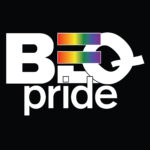 Robin Dillard
Robin Dillard
@BizPridePiper / @RobinRDillard
robin@BusinessEqualityNetwork.com
BusinessEqualityMagazine.com
669-237-2329
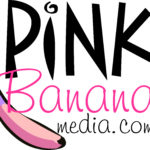 Matt Skallerud
Matt Skallerud
IG: @PinkBananaMedia
Twitter: @PinkBananaWorld
Matt@PinkBananaMedia.com
323-963-3653
Commitment, Consistency and a Simple Plan
Here’s a simple plan to establish your personal brand in service to the causes you care about, your business (or brands you represent) and your brilliance. Establishing a simple process for getting your personal brand seen on whichever platform you like most and then committing to expand to all four we discussed, over time.
The Simple Plan
- Create your profiles on Facebook, LinkedIn, Instagram and Twitter and let us know.
- Do some social networking with people you know (or want to know)—Follow, Like, Share and Comment on their posts.
- Create a post around something that interests you today and at least one post for every DEI event you attend.
- Contact us if you need help… THEN REPEAT steps 2-4 at least once a week.
Business Equality Pride (BEQPride) is the first publication from the BEQ family of national print and digital magazines exclusively addressing the needs of LGBTQ small-to-medium sized businesses, entrepreneurs and professionals.





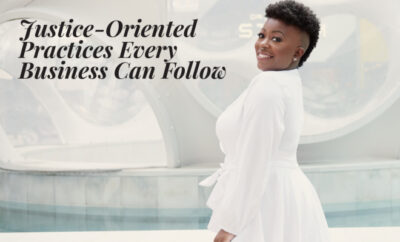
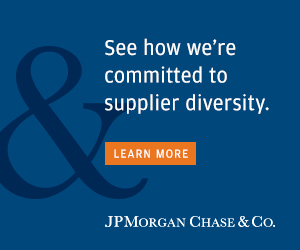
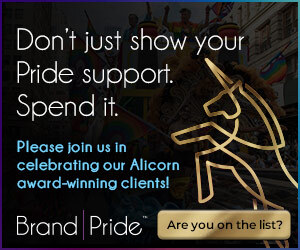
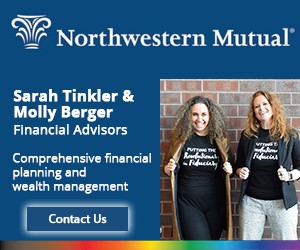
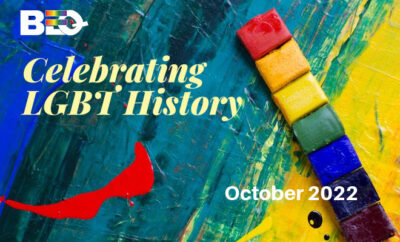







0 comments